Filter by
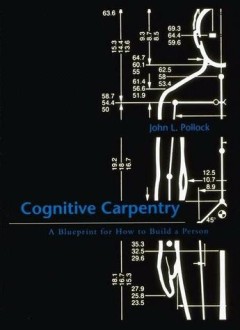
Cognitive Carpentry: A Blueprint for How to Build a Person
A sequel to Pollock's How to Build a Person, this volume builds upon that theoretical groundwork for the implementation of rationality through artificial intelligence. Pollock argues that progress in AI has stalled because of its creators' reliance upon unformulated intuitions about rationality. Instead, he bases the OSCAR architecture upon an explicit philosophical theory of rationality, encom…
- Edition
- -
- ISBN/ISSN
- 9780262281751
- Collation
- 1 online resource (xiii, 377 pages) :illustrations
- Series Title
- -
- Call Number
- -
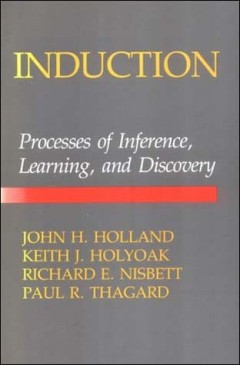
Induction : processes of inference, learning, and discovery
Includes appendix 12A: a walking tour of the computational ideas underlying classifier systems.Two psychologists, a computer scientist, and a philosopher have collaborated to present a framework for understanding processes of inductive reasoning and learning in organisms and machines. Theirs is the first major effort to bring the ideas of several disciplines to bear on a subject that has been a…
- Edition
- -
- ISBN/ISSN
- 0262081601
- Collation
- 1 online resource (xvi, 398 pages) : illustrations.
- Series Title
- -
- Call Number
- 100 HOL i
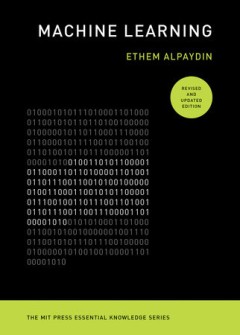
Machine Learning (Revised And Updated Edition)
"An updated introduction for generalists to this powerful technology, its applications and possible future directions"--OCLC-licensed vendor bibliographic record.
- Edition
- Revised and updated edition.
- ISBN/ISSN
- 9780262365369
- Collation
- 1 online resource.
- Series Title
- -
- Call Number
- -
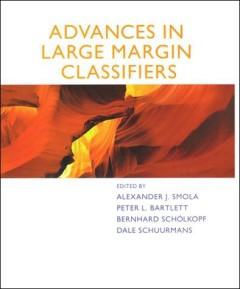
Advances in large margin classifiers
The concept of large margins is a unifying principle for the analysis of many different approaches to the classification of data from examples, including boosting, mathematical programming, neural networks, and support vector machines. The fact that it is the margin, or confidence level, of a classification--that is, a scale parameter--rather than a raw training error that matters has become a …
- Edition
- -
- ISBN/ISSN
- 9780262283977
- Collation
- 1 online resource (vi, 412 pages) :illustrations.
- Series Title
- -
- Call Number
- -
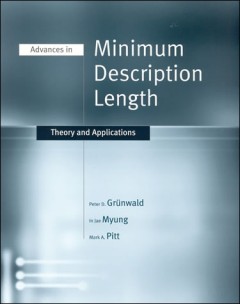
Advances in minimum description length :theory and applications
A source book for state-of-the-art MDL, including an extensive tutorial and recent theoretical advances and practical applications in fields ranging from bioinformatics to psychology.The process of inductive inference--to infer general laws and principles from particular instances--is the basis of statistical modeling, pattern recognition, and machine learning. The Minimum Descriptive Length (M…
- Edition
- -
- ISBN/ISSN
- 9780262274463
- Collation
- 1 online resource (x, 444 pages) :illustrations.
- Series Title
- -
- Call Number
- -
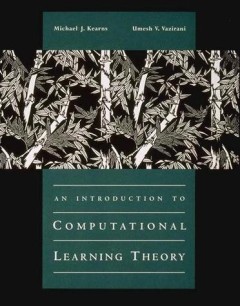
An introduction to computational learning theory
Emphasizing issues of computational efficiency, Michael Kearns and Umesh Vazirani introduce a number of central topics in computational learning theory for researchers and students in artificial intelligence, neural networks, theoretical computer science, and statistics.Computational learning theory is a new and rapidly expanding area of research that examines formal models of induction with th…
- Edition
- -
- ISBN/ISSN
- 0585350531
- Collation
- 1 online resource (xii, 207 pages) :illustrations
- Series Title
- -
- Call Number
- 005 KEA i
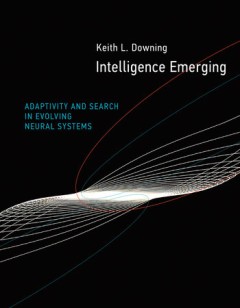
Intelligence emerging : adaptivity and search in evolving neural systems
"Emergence--the formation of global patterns from solely local interactions--is a frequent and fascinating theme in the scientific literature both popular and academic. In this book, Keith Downing undertakes a systematic investigation of the widespread (if often vague) claim that intelligence is an emergent phenomenon. Downing focuses on neural networks, both natural and artificial, and how the…
- Edition
- -
- ISBN/ISSN
- 0262328666
- Collation
- 1 online resource (xxii, 475 pages) :illustrations
- Series Title
- -
- Call Number
- -
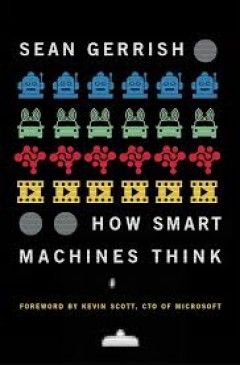
How Smart Machines Think
The future is here: Self-driving cars are on the streets, an algorithm gives you movie and TV recommendations, IBM's Watson triumphed on Jeopardy over puny human brains, computer programs can be trained to play Atari games. But how do all these thingswork? In this book, Sean Gerrish offers an engaging and accessible overview of the breakthroughs in artificial intelligence and machine learning t…
- Edition
- -
- ISBN/ISSN
- 9780262347938
- Collation
- 1 online resource (xiv, 298 pages)
- Series Title
- -
- Call Number
- -
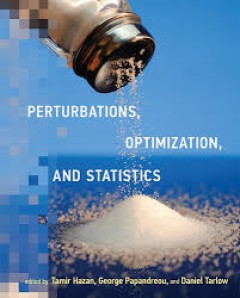
Perturbations optimization and statistics
A description of perturbation-based methods developed in machine learning to augment novel optimization methods with strong statistical guarantees.In nearly all machine learning, decisions must be made given current knowledge. Surprisingly, making what is believed to be the best decision is not always the best strategy, even when learning in a supervised learning setting. An emerging body of wo…
- Edition
- -
- ISBN/ISSN
- 9780262337939
- Collation
- 1 online resource (ix, 401 pages).
- Series Title
- -
- Call Number
- -
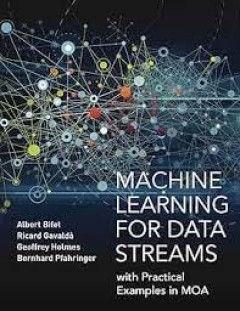
Machine learning for data streams with practical examples in MOA
A hands-on approach to tasks and techniques in data stream mining and real-time analytics, with examples in MOA, a popular freely available open-source software framework.OCLC-licensed vendor bibliographic record.
- Edition
- -
- ISBN/ISSN
- 9780262346047
- Collation
- 1 online resource (xxi, 262 pages) :illustrations.
- Series Title
- -
- Call Number
- -
 Computer Science, Information & General Works
Computer Science, Information & General Works  Philosophy & Psychology
Philosophy & Psychology  Religion
Religion  Social Sciences
Social Sciences  Language
Language  Pure Science
Pure Science  Applied Sciences
Applied Sciences  Art & Recreation
Art & Recreation  Literature
Literature  History & Geography
History & Geography